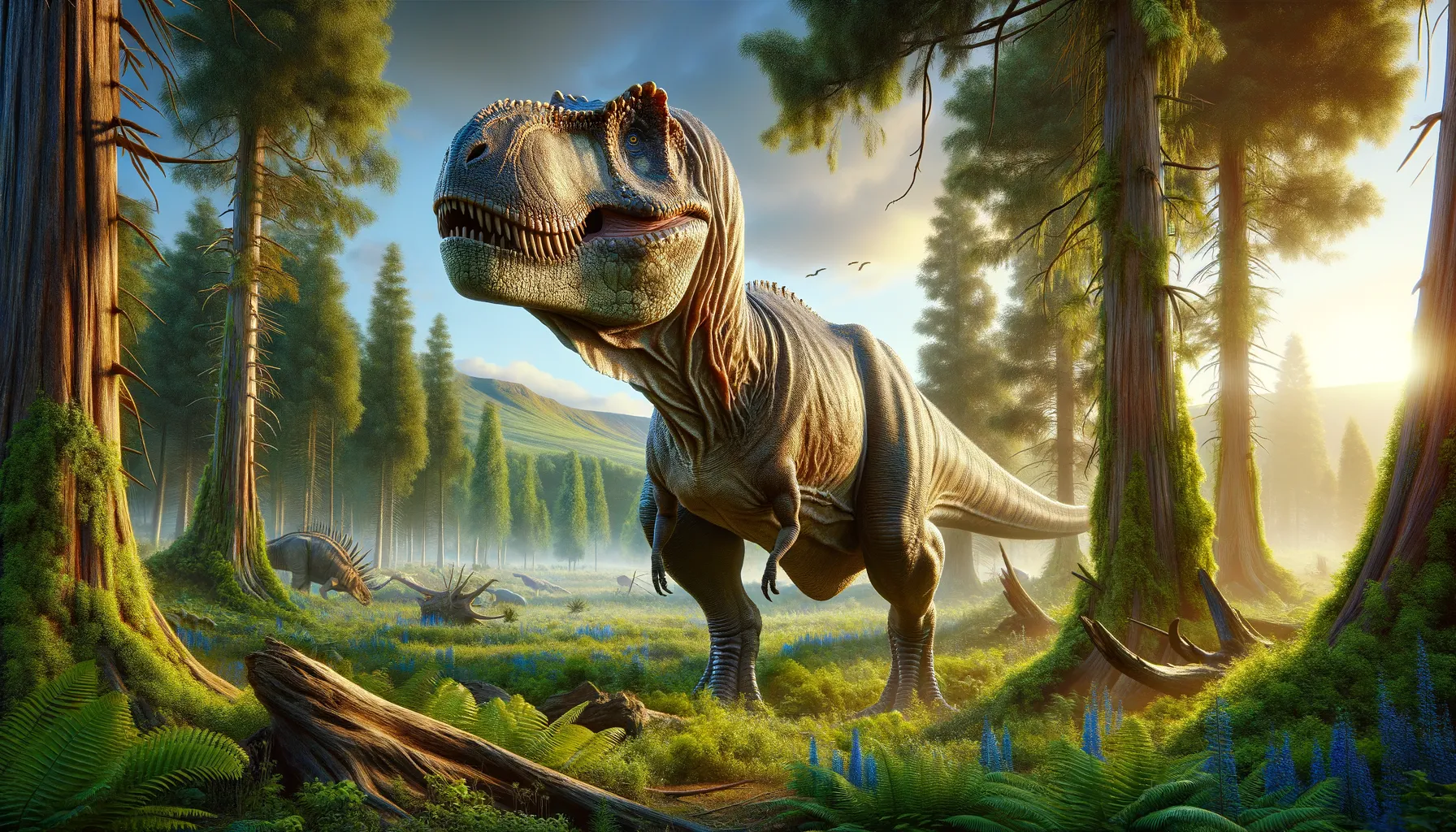
Manospondylus
The emperor of the ancient wilderness!
Period
Cretaceous
Length
Up to 40 feet long.
Height
12 feet at the hips.
Weight
6 to 8 tons.
Manospondylus is known by many to be an early name given to the iconic Tyrannosaurus Rex. It thrived in the forests and plains of North America during the Cretaceous period. Its massive size and incredible strength made it a dominant predator of its time, sparking great interest among paleontologists. Despite being known mostly from fragmentary fossils, Manospondylus has played a crucial role in the history of dinosaur research.
Diet
Manospondylus was a carnivorous dinosaur that primarily fed on large herbivores. Its diet included other dinosaurs like Triceratops and Edmontosaurus, which it hunted or scavenged.
Hunting
As a top predator, it relied on both its keen senses and strength to hunt. It would ambush its prey using the element of surprise before delivering a powerful bite to subdue its meals.
Environmental challenges
Manospondylus faced competition from other large predators of its time, needing to defend its territory and meal sources. The shifting climates of the Late Cretaceous could have influenced its hunting patterns and migration. Additionally, the end-Cretaceous extinction event posed the greatest threat, leading to drastic changes in its environment and food sources.
Speed
Believed to be fast and agile.
Lifespan
Estimated to be around 20 to 30 years.
First discovery
Discovered in the late 1800s in South Dakota.
Fun Facts
- Manospondylus was initially discovered in 1892 and is considered one of the early finds in dinosaur paleontology.
- The remains of Manospondylus were later found to be identical to the famous Tyrannosaurus rex, meaning they are the same dinosaur.
- The name Manospondylus means 'porous vertebrae' due to the nature of the fossils originally discovered – some thought the bones had a sponge-like texture.
- It was Edward Drinker Cope, a well-known paleontologist, who described Manospondylus in the 19th century.
- Manospondylus fossils were found in the Lance Formation of South Dakota, a region rich with dinosaur history.
- The naming priority law could have made Tyrannosaurus rex change its name to Manospondylus had it not gained wide acceptance first.
- Despite its initial naming, Manospondylus didn’t capture the public imagination like the mighty T. rex did.
Growth and Development
Manospondylus exhibited rapid growth in its juvenile stages, reaching near-adult sizes in a few years. This fast growth rate helped in escaping predators at a young age. As it matured, its growth rate slowed, allowing it to conserve energy for hunting and territory establishment.
Habitat
Its habitat consisted of a mix of forested areas and open plains in what is now North America. This environment provided ample prey and shelter. The region's rivers and lakes offered vital water sources and sustained a variety of life forms for Manospondylus to prey upon.
Interaction with other species
Interacted both as a predator and as a competitor with other large carnivorous dinosaurs. Its interactions with herbivorous dinosaurs involved hunting and occasional scavenging. Manospondylus' dominance meant fewer direct threats from other species, though it would still confront rivals for feeding rights.
Natural lifespan
Manospondylus lived up to 30 years in the wild.
Reproduction
Likely reproduced by laying eggs, as is common with theropods. Nests would have been built in secluded areas, possibly guarded by one or both parents. Hatchlings required rapid growth and parental protection in their early stages of life.
Social behaviour
Believed to be generally solitary, coming together only for breeding or when food sources were abundant. Territorial disputes were likely settled through displays of strength or brief confrontations.
Fossil locations
Fossils initially discovered in the region of South Dakota, USA. Later discoveries connected specimens across the western United States, contributing to the understanding of its geographical range. This connection helped clarify its historical link with the Tyrannosaurus Rex.
